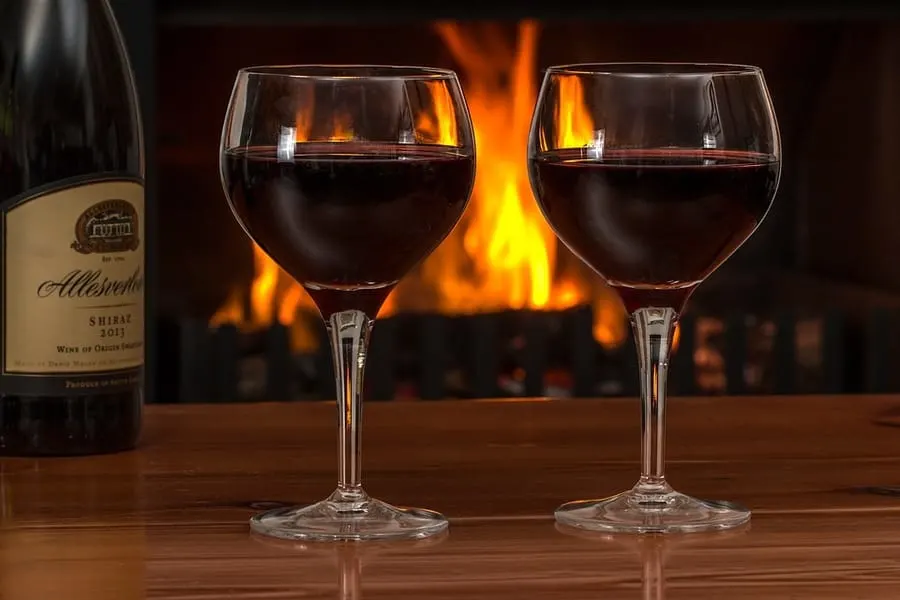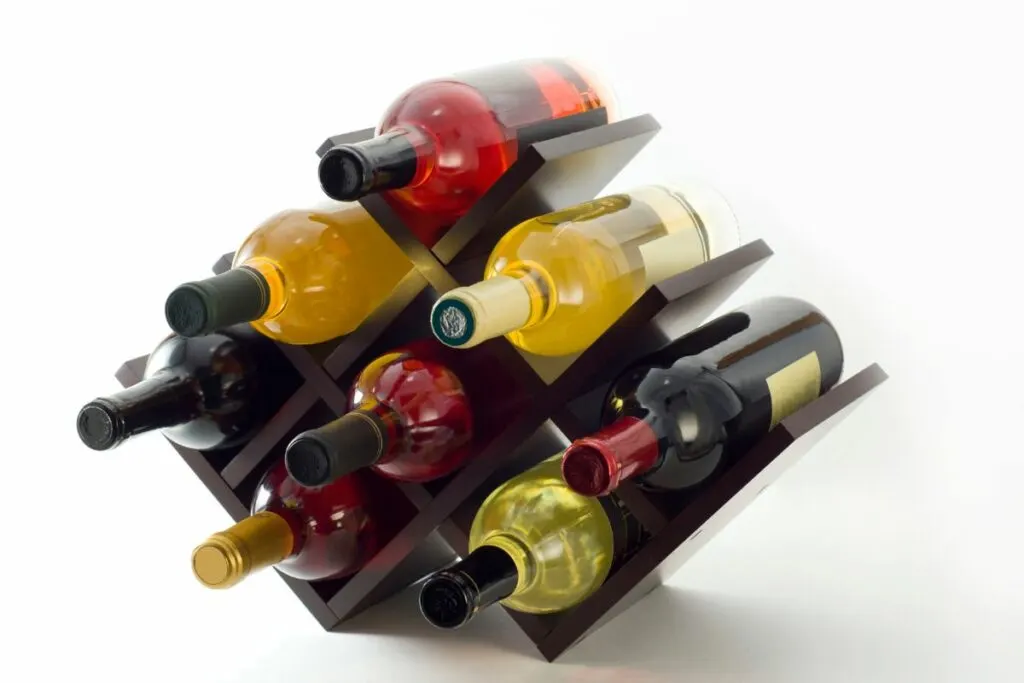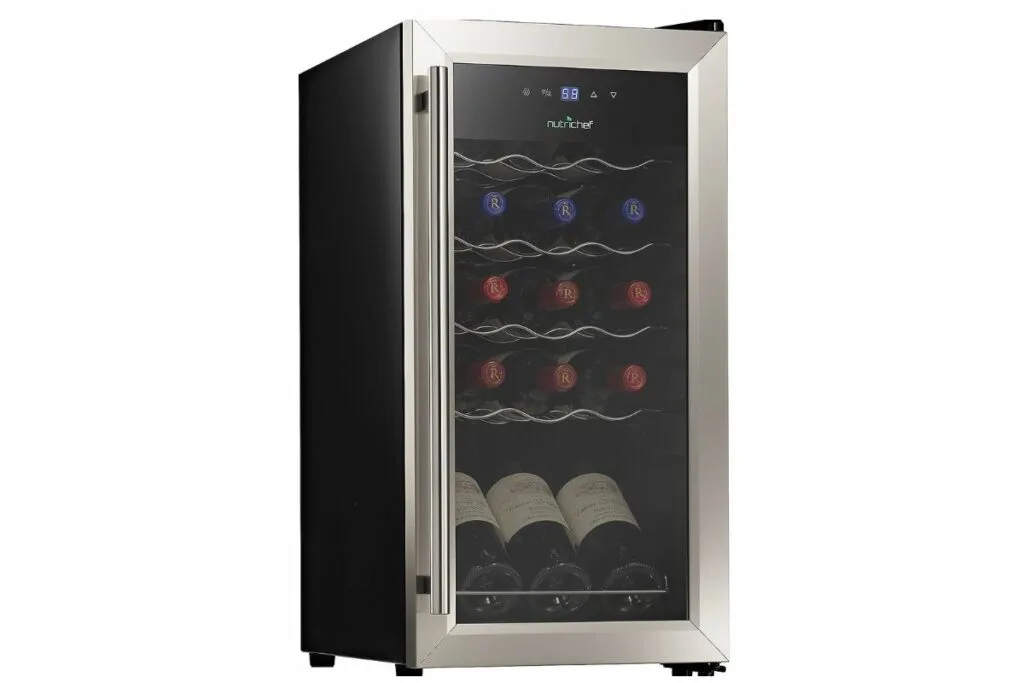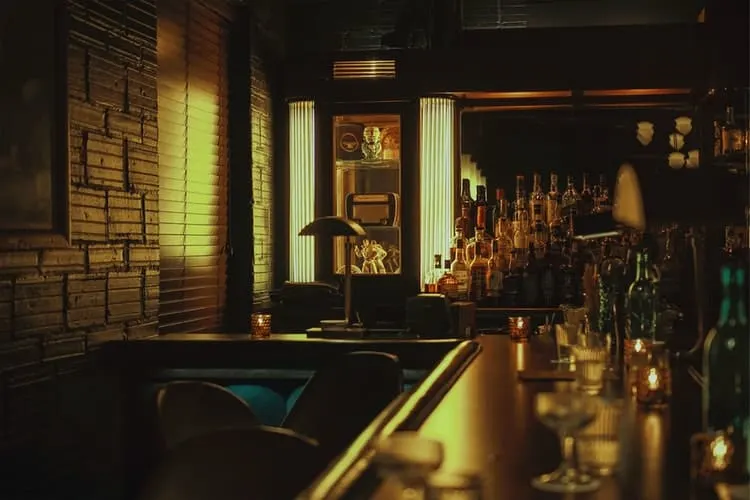As an Amazon Associate, I earn from qualifying purchases with no additional costs for you.
For many people, sitting back and enjoying a glass or two of wine at the end of a long day is one of the simpler joys in life. To experience your wine to the fullest, it should be stored under optimum conditions. Even if you are not a wine connoisseur, it may be worth investing in a wine cooler (refrigerator) to keep the bottles you do have in excellent condition.
Are wine coolers (refrigerators) really necessary? Wine coolers are one of the best options for properly storing your wine long-term under ideal conditions to maximize flavor, body, and notes. Wine refrigerators are ideal for long-term storage of wine and allowing fine wine to age properly.
If you have intentions of quickly consuming a bottle or two after purchase, storing them in a regular kitchen refrigerator or at room temperature should be fine enough.
Wine, unlike soda, juice, and other beverages, has specific storage guidelines. If you are planning to store the wine for several months, how you store the wine will make a difference in how it tastes. Several factors need to be considered to ensure that your wine stays in prime condition until you are ready to drink it.

TIP: If you want to check out the best refrigerator for wine storage, I recommend trying out the Avation (18 bottles) compressor refrigerator with Wi-fi smart app control cooling system. You can find this refrigerator by clicking here (Amazon link).
How Should Wine Be Stored?
Temperature, humidity, light, and vibration can affect a wine while it is being stored. Understanding how these factors affect your wine will allow you to take better care of your wine. It is worth considering buying a wine cooler (refrigerator) if you have more than a few wine bottles on your countertops or in your refrigerator at any one time.
Optimal Temperature for Wine
Ideally, wine should be kept between 45- and 65 degrees Fahrenheit. The exact temperature will depend on the type of wine. Many people say that 55 degrees are a good temperature for storing both red and white wine (though not for drinking both).
- Wine should not get too hot. Warm temperatures can ruin or “cook” the wine. You may remember a time when you left a bottle of wine in your car in the summer, and when you opened it, it smelled and tasted stewed. The wine that is kept at temperatures of 70 degrees Fahrenheit or higher will also age more quickly.
- Wine should also not get too cold. This is one of the reasons why storing wine in your refrigerator is not optimal for longer-term storage (more than a couple of months). Storing wine below 45 degrees could cause the cork to dry out, which could damage the wine by allowing allow air to seep into the bottle.
- Temperature swings should also be avoided to preserve the wine in the best condition. Extreme or frequent changes in the temperature may cause the wine to seep out or the flavors to become dulled.
TIP: I have an excellent guide on what temperatures to serve wine at. Read here for the best information and tips. Do you know if you can keep your wine in the dark? Find out here.
How Humidity Affects Wine
Unless you live in extreme climates, humidity should not be an issue, but you should consider humidity when you decide where to store your wine. Do not store wine in rooms that are not climate controlled to avoid humidity affecting the bottles.
The optimal humidity for wine storage is 70 percent.
- If the air is too dry, it will dry out the cork, allowing air into the bottle, which can spoil the wine.
- If the air is too humid, the moisture can cause mold. If the wine is sealed properly, too much humidity will not likely affect the wine, but it could damage the label.
Is Wine Sensitive to Light?
Have you ever wondered why many wines come in colored glass bottles or why cellars make good wine storage locations? It has to do with light. Sunlight and even light bulbs can damage wine and make the labels fade over time.
Light mostly affects wine that is stored for years. The amount of light a bottle of regular dinner wine sees will not affect most wines kept for short periods – even wine that is stored for months.
Light, temperature, and humidity are all reasons that wines should not be stored outside or in bright or non-climate-controlled rooms. This is why a wine refrigerator is ideal.
Wine and Vibrations
Vibrations can disturb the sediment in the wine, causing the wine to have a gritty texture. It is also believed that vibrations speed up the aging process.
This factor is not likely to affect the average wine drinker. It would take a lot of vibrations over a long period to have any noticeable effect.
With that said, it is not recommended that you shake your bottle of wine before you open it. Standard kitchen refrigerators produce tiny vibrations that can ruin wine, but wine coolers store wine without micro-vibrations.
Should Wine Bottles be Stored Horizontally or Vertically?

Wines with corks are traditionally stored on their side to keep the cork from drying out. These days many wines come with screw caps and plastic corks, so horizontal storage is not necessary.
Although not necessary, storing wine bottles on their sides is a great space saver, which is why most wine racks and wine refrigerators are designed to hold wine bottles horizontally.
TIP: Having quality storage racks for your wine is not only practical but can also serve as a nice design accessory for your home. We loved these (Amazon links):
- Ferfil Wine Rack (10 Bottles): Concertina/scissor fold wooden wine rack made of solid, eco-friendly wood.
- Gusto Nostro Wood Wine Rack: Beautiful, elegant design, the possibility of storing up to 7 bottles, and the choice of vertical or horizontal storage.
Do You Need a Wine Cooler for Red Wine?
Storing red wines in a wine cooler (refrigerator) is a good idea. Although you drink red wine closer to room temperature, it should be stored at a lower temperature. Each red wine will have an optimal storing temperature, but if you do not have a dual-temperature wine cooler, 55 degrees is the average storing temperature for both white and red wine.
If you do not have a wine cooler for your red wine, it should be stored in a cool place. The kitchen is not a good place to store red wine because temperatures rise in your kitchen when you cook.
To enjoy red wine that has been stored in a wine cooler, you should open it and let it sit for a while before you drink it. Depending on the temperature of the room, once opened, the wine should be at optimal drinking temperature in about 10-20 minutes.
Tip: Read this complete guide for storing red wine, and read this article to find out everything you need to know about cheap vs expensive wines.
Why Refrigerators Are Different from Wine Coolers?
You may be asking yourself, “I have a perfectly good refrigerator in my kitchen. Why can’t I use it to store my wine?” That is a great question. Here are the reasons why a refrigerator is not the best option for storing your wine:
- Refrigerators are often kept at an average of 40 degrees. Wines should be stored at around 55 degrees.
- Refrigerators are designed to cool products quickly and keep out humidity. Wine coolers lower the temperature of wine gradually and help keep wine at the proper level of humidity (keeping the cork moist).
- The odors from food can seep into your wine if left in the refrigerator for too long.
- Refrigerators vibrate, and vibration can disrupt the maturation process.
- Most refrigerators have vertical storage for tall items. Wine coolers are designed to store wine on its side for even distribution of sediment and to keep the cork from drying out.
Unlike refrigerators, wine coolers are specifically made to provide the best storage environment for your wine. Many wine coolers come with dual temperatures, allowing for optimal storage of both red and white wine.
All good wine needs good products. Read on to discover our favorites!
Recommendation box: Everything you need to enjoy your wine as much as possible. All recommended products are personally tested and regularly used by experts from this website (Amazon links):
> Ivation Wine Cooler – Energy-efficient wine cooler for 18 bottles with Wi-fi smart app control cooling system.
> Wine Rack – Beautiful, elegant wood rack for up to 7 bottles and the choice of vertical or horizontal storage.
> Durand Wine Opener – Classic vintage wine opener (we like all these classic staff).
> YouYah Iceberg Wine Decanter – The most beautiful and handy wine decanter we personally use.
> Bormioli Rocco Wine Glasses – A set of eight elegant and traditional wine glasses made in Italy.
> Vintorio Wine Aerator – Simple but really useful wine aerator for a reasonable price.
> The Original Vacu Vin Wine Saver – The best wine saver on the market in a package with two vacuum stoppers and two wine servers.
And if you want to become a true connoisseur of wine, we recommend reading the book Wine Folly: The Essential Guide to Wine (Amazon link), where you will find all the information you need about winemaking, wine varieties, flavors, and much more.
What to Look for in a Wine Cooler (Refrigerator)

If you are not in the position to build a wine cellar, a wine cooler is the next best thing. Wine coolers come in a variety of models and price ranges. The type you pick will be based on the amount of room in your home, how much wine you store, and what sort of features you desire.
The most basic wine coolers are perfect for storing a small collection of wine that will be consumed regularly. The higher-end models have dual temperature and humidity controls and are made from better materials.
Here are a few popular wine cooler (refrigerator) models (Amazon links):
NutriChef Compresor Red & Wine Cellar
- Holds 18 Bottles
- Digital touch-button display to adjust the temperature
- Vertical and horizontal storage
- Free-standing
- Holds 24 bottles
- Shelves pull out
- Dual temperature
- Free-standing
Koolatron Slim Dual Zone Cooler
- Holds 18 Bottles
- Digital touch-button display to adjust the temperature
- Shelves pull out
- Dual temperature
- Slim to fit in small spaces.
- Free-standing
Operating costs are something a lot of wine drinkers worry about when considering a wine refrigerator. This article I wrote will debunk a lot of myths and give you a better estimate of how much it will cost.
The Difference in Wine Cooler (Refrigerator) Shelving

An important feature to consider when purchasing a wine cooler is the shelving. Access to your wine is important. Some wine coolers have pull-out shelves that allow you to see the bottles easily. Lower-end wine coolers have racks that do not slide out.
If you collect bottles that are odd shapes and sizes, you will want to make sure your wine cooler has adjustable shelves.
Wine Cooler Doors
The style of the door for your wine cooler is an important consideration. Not all wine coolers have reversible doors, so you need to make sure the model you buy opens on the correct side for where you are putting it.
Doors also come in different types of glass. Some are UV-resistant, some are clear. How the door looks will have a lot to do with your taste in furniture, but the function is also a factor. Protecting your wine bottles from light may be important to you.
Storing Leftover Wine
After a bottle of wine is opened, it begins to oxidize. This chemical reaction that occurs when a wine is exposed to air will eventually make the wine taste acidic.
When you first open a bottle of wine, you should let it ‘breathe’ because some oxidation will make the wine more flavorful. Too much oxidation will turn the wine, and it will not be pleasant to drink.
- After a bottle of white wine is opened, it will last about 7 days if stored properly.
- A bottle of red wine will last about 5 days stored properly
TIP: If you have ever wondered which wines you can decant, read this article. And what about boxed wines? Can they be stored or frozen? Find out here.
Here are ways to preserve the wine after it is opened:
- Refrigerating wine, red or white, after it is open, will slow down the oxidation process.
- Putting the cork back in the bottle is not the best option for sealing wine back up because it does not create an airtight seal, but it is better than leaving the bottle open
- A wine stopper is better than a cork because it forms an airtight seal. A wine stopper with a pump is even better. Pumping the oxygen out of the opened bottle will help preserve your wine longer.
- Argon wine preservers claim to keep the wine fresh for up to two weeks. These products displace oxygen in the bottle with argon gas, and the argon protects the wine from spoiling.
TIP: Are you interested in buying a wine stopper? We’ve personally tried and recommend buying one of these wine stoppers (Amazon links):
- The Original Vacu Vin Wine Saver: Our top choice. Very easy-to-use wine stopper/saver. You can enjoy a glass of fresh wine whenever you want without worrying about wasting any.
- EZBASICS Wine Saver: Great alternative to Original Vacu Vin Saver. This wine stopper keeps the flavor of wine for up to one week.
- Champagne Stopper by MiTBA: Wine stoppers for sparkling wines are different. This wine stopper seals your bottle and increases the pressure so your beverage’s bubbles won’t go to waste.
How to Tell When Wine Goes Bad
It is a disappointment when you take out a bottle of wine that you have been looking forward to drinking, opened or unopened, and it has gone bad. Sometimes we want to make ourselves believe the wine is not bad, so we make excuses for the acrid smell and bad taste.
Don’t drink that bad bottle of wine. Here are ways to tell if a bottle is no longer fit to drink:
- Wine should smell fruity, earthy, floral, or citrusy. It should not smell musty, moldy, or like vinegar.
- As wine becomes more oxidized, it will turn brown or deep yellow. It does not necessarily mean the bottle is bad, but it is a sign that the wine is at the end of its life.
- Some wines start cloudy, but if your wine was clear when you bought it and now it has a hazy look to it, it could mean your bottle has turned.
- Bubbles. If you buy sparkling wine, the bubbles are a treat. If you buy a still wine and it starts to bubble, it means it is undergoing a second fermentation, and you should toss the bottle.
- Taste. Wine should not taste sour or like vinegar. If that is how your wine tastes, it has gone bad.
- Expanded cork. If the cork on your bottle of wine looks like it is starting to come out, that means the bottle was exposed to extreme temperatures, and the wine expanded. Be sure to examine the wine from these bottles as they have likely spoiled.
You shouldn’t experience these conditions if you are storing wine in a proper wine cellar or wine cooler refrigerator.
Final Thoughts
Enjoying a glass of wine to celebrate an event or unwind after a stressful day is a treat for many people. Storing your wine properly will ensure that you get the most out of that glass of wine.
When building a wine cellar in your basement is not in the budget, a wine cooler (refrigerator) is a great option. They are not needed to properly store wine, but they do a great job at a greatly reduced cost.
TIP: Check out this page for a complete list of wine products and accessories I love. You’ll find my recommendations for wine refrigerators, decanters, and aerators and the best place to buy wine online. Click here to see the complete listing.
